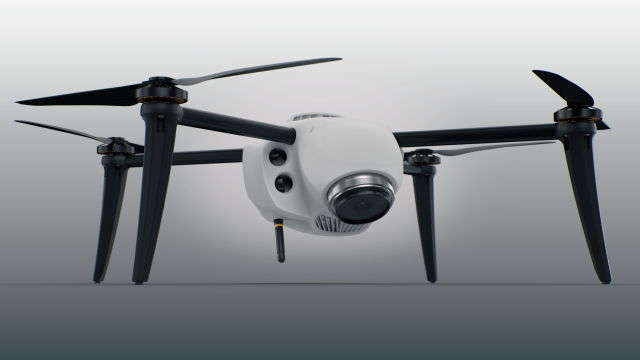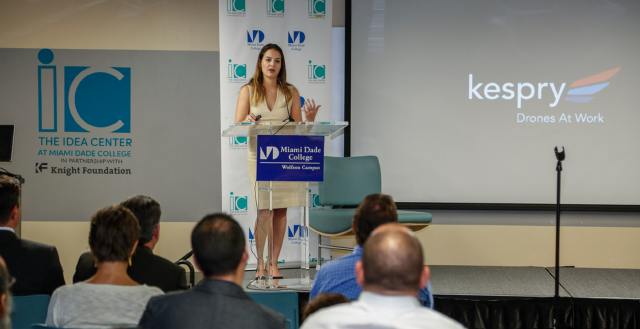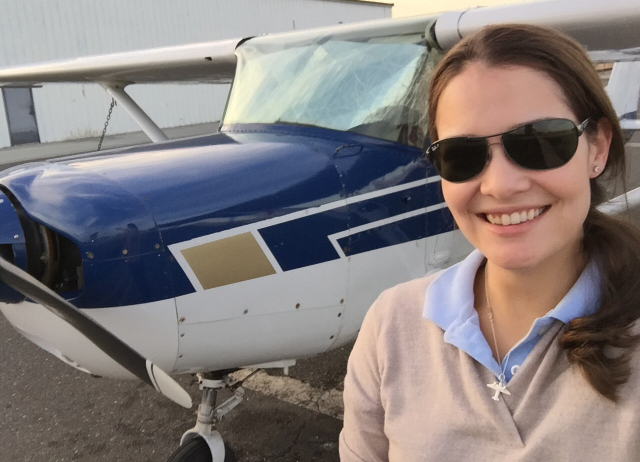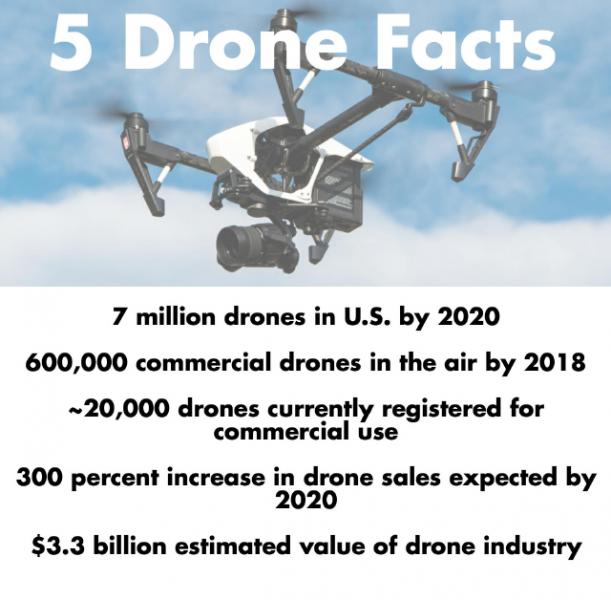Alumna’s creativity takes flight at commercial drone startup
Blue-sky thinking helps alumna Carolina Ragolta, A.B. ’13, navigate the largely uncharted territory of the commercial drone industry.
Ragolta, who concentrated in biomedical engineering at the Harvard John A. Paulson School of Engineering and Applied Sciences (SEAS), is charting a new course of her own, as the first product manager at commercial drone startup Kespry.
She manages all aspects of the company’s flagship product, an autonomous drone used for taking aerial images, and the software package that enables customers to convert images into detailed 2D and 3D computer models.

Kespry's flagship product, an autonomous drone used for taking aerial images. (Photo provided by Carolina Ragolta.)
As product manager, she builds a roadmap for the company’s engineering team based on sales data, moves by competitors, and feedback from the firm’s three main customer groups: the aggregates, construction, and insurance industries. Kespry drones are used primarily for conducting aerial mapping and measurement—useful for calculating mass and volume of towering aggregate stockpiles, tracking progress at a construction site, and inspecting hail-damaged roofs.
“Our approach has been to make a seamless, end-to-end solution that brings together hardware, software, and services that are easy to use in a lot of different industries,” she said. “Aggregates, construction, and insurance are some of the oldest and largest businesses. Our challenge is to make our technology really accessible for people in these very well-established industries.”
Meeting that challenge requires Ragolta to interpret feedback from sales teams while keeping an eye on industry trends. While Kespry is always on the lookout for new industries that may be ripe for expansion, the firm carefully monitors how potential regulations may affect current business. The volatile nature of the regulatory environment is one unique aspect of working in the drone industry, she explained.
For instance, the Federal Aviation Administration requires drones to be flown within the line of sight of an operator. If that rule changes in the future, it could open new doors for Kespry’s products.
“At some point, the regulatory environment is going to catch up with technological development,” she said. “As technologies like obstacle avoidance and autonomous navigation improve, it will make it easier for drones to go beyond the line of sight of an operator, cover greater areas, and do more innovative things. Virtual reality and augmented reality are two complementary technologies that are going to play a major role in the drone industry, as well.”

Ragolta shares insights about commercial drones at an industry event. (Photo provided by Carolina Ragolta.)
Ragolta envisions a scenario in which an insurance adjustor, using a virtual reality headset, can assess the damage on a roof by watching from her office as she pilots a drone over a building. That technology could be a boon for worker safety, since it would eliminate the need for a human to climb onto a steep and possibly unstable roof, she said.
While Ragolta may not be debugging code or constructing the drones, she puts the problem-solving skills she developed at SEAS to use by working collaboratively with teams of engineers to analyze and evaluate new and proposed features. Being able to work closely with such brilliant engineers is one of the things she enjoys most about her job.
Even as Ragolta helps Kespry’s business take flight, she has her sights set on her career trajectory. She will enroll in an MBA program at Stanford this fall, where she will pursue a master’s degree in aerospace engineering with the ultimate goal of becoming a NASA astronaut—an aspiration she has held since her time as a Harvard undergrad.

Ragolta, who earned her private pilot's license in December, will soon enroll in a graduate program at Stanford University with the ultimate goal of becoming a NASA astronaut. (Photo provided by Carolina Ragolta.)
Her best advice to future Harvard engineers—keep an open mind.
“When I was starting my senior year, I never would have expected that my first job would be in product management, a field I didn’t even know existed,” she said. “But I trusted my gut and it felt right, and that was my springboard to my role at Kespry and beyond.”
